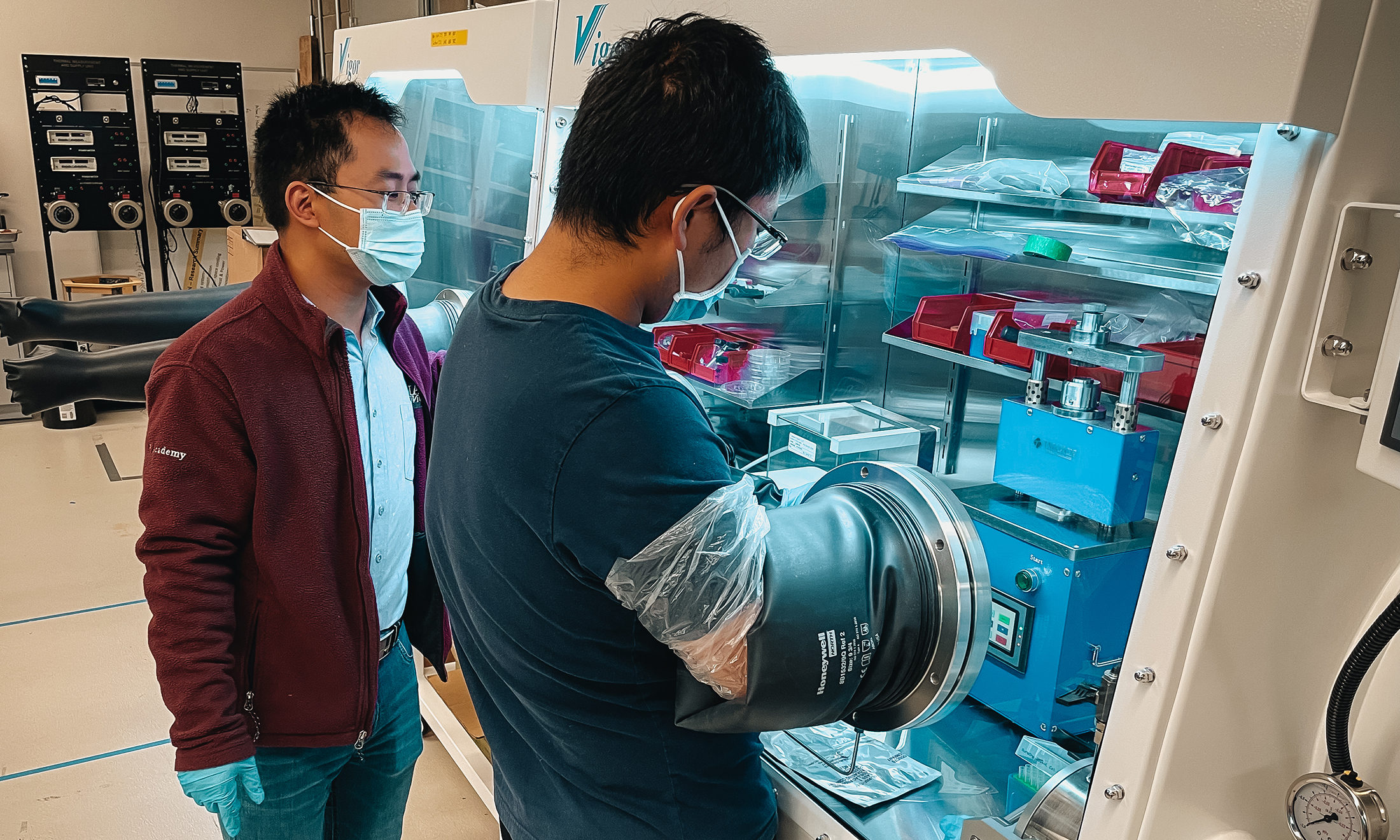Lighting the Way
Ankun Yang, Ph.D., assistant professor of mechanical engineering, conducts research on effective plasmonic materials
Modern instrumentation and equipment for display, computation, communication, and sensing largely depend on electronic and optoelectronic devices as their central components. Continuous increases in device speed and functionality present many challenges to materials science and engineering.
Nanostructured materials in particular have attracted a lot of attention lately due to their contributions to different disciplines, including photonics – the physical science behind the generation, detection and manipulation of light. This growing area in materials development became a subject of recent research conducted by Ankun Yang, Ph.D., assistant professor of mechanical engineering.
“Nanostructured materials are materials with dimensions in the range of nanometers (typically 1–100 nm). They exhibit novel properties that are different from their bulk material counterparts. Since the properties of nanostructures always depend on their size, shape and morphology, they can be tuned and refined,” Dr. Yang says.
Metallic nanostructures specifically have the ability to source, detect and control light through surface plasmons, confining free space light into nanoscale dimensions for numerous applications. Thus, it is vital to find effective plasmonic materials that can deliver the maximum performance – the task that was in the center of Dr. Yang’s latest study, performed along with his students, Abdelsalam Rawashdeh, Sylvia Lupa and William Welch.
“Noble metals, such as gold and silver, are commonly used plasmonic materials, but they are not ideal. They experience parasitic ohmic losses due to electron-phonon and electron-electron scatterings, which severely limits the device performances,” explains Rawashdeh, mechanical engineering graduate student. “On the other hand, sodium (Na) is predicted to be an ideal plasmonic material with much lower loss than gold and silver across the whole ultraviolet to near-infrared wavelength regime. Still, despite its promising properties, research on sodium plasmonics has been limited due to its chemical reactivity,” he adds.
Recently, however, thermo-assisted spin-coating technique was proposed to successfully fabricate Na films, providing material data as well as inspiration to Dr. Yang’s research. Different from a continuous film that supports propagating electromagnetic waves (surface plasmon polaritons, SPPs), isolated nanoparticles (NPs) support non-propagating or localized electron oscillations (localized surface plasmons, LSPs). Nanoparticles generally show much lower loss than films because they possess much less material; therefore they are preferred choices for building energy-efficient devices.
Dr. Yang and his group theoretically modelled the optical responses of Na NPs, demonstrating several approaches to engineer both far-field resonance linewidth and local electromagnetic field enhancement for Na NPs through surface lattice plasmons. They investigated the sodium nanoparticles (size, array period, unit structure) and the excitation light (polarization, angle of incidence) to manipulate light interactions with sodium nanoparticles. By exciting in-plane and out-of-plane surface lattice plasmons, the team obtained resonances with extremely narrow linewidths and localized electromagnetic field with amplified intensities for sodium nanoparticles.
“The study demonstrated that single Na NPs revealed stronger scattering and absorption cross-sections and more amplified local electronic field in comparison to other materials with the same dimensions, but still showed rather broad linewidths. By implementing simple unit structures that are sensitive to the polarization of light, such as a dimer structure for example, we achieved surface lattice resonances for both horizontal and vertical polarizations as well as tunable multimodal responses,” Dr. Yang shares.
The scientists anticipate that Na surface lattice plasmons with narrow linewidths and amplified local E-field can find applications in low-loss plasmonic devices such as photonic integrated circuits, chemical sensing and other solid-state optical devices. The research was partly funded by the National Science Foundation’s Research Experience for Undergraduate program, which allowed Lupa (OU) and Welch (UCLA) to participate in the study. The study was published in The Journal of Physical Chemistry C.
Currently, Dr. Yang is in the process of establishing a materials and photonics laboratory to enable his further work in nanophotonics, including experimental exploration of sodium plasmonics. Besides nanophotonics, Dr. Yang is also interested in studying electrochemical materials and devices including lithium-sulfur and lithium-metal electrochemistry. Dr. Yang is open to collaborations and partnership opportunities. He can be reached at [email protected].
Learn more about the School of Engineering and Computer Science.

 December 16, 2021
December 16, 2021
 By Arina Bokas
By Arina Bokas



